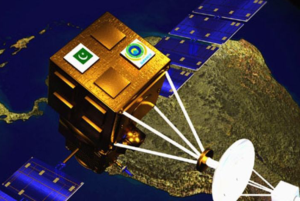
Pakistan has revealed plans for its expanded space programme that includes a second high-resolution Earth observation satellite, a satellite navigation system, and telecommunication links with China as part of the China-Pakistan Economic Corridor (CPEC) infrastructure project.
As part of its annual development plan for the next fiscal year, Pakistan will establish an indigenous facility for the development of satellites in accordance with “international space standards.”
The facility, to be called Pakistan Space Centre, will have the capability to manufacture, test, assemble, integrate, and operate various types of satellites. The country’s Information and Communication Technology Annual Plan for 2018-19 includes guidance that Pakistan’s Multi-Mission Satellite (PakSat-MM1) will cater to the demand of Direct-To-Home (DTH), High-Throughput Services (HTS), broadband Internet, and governmental satellite communications.
The Pakistan Planning Commission documentation PC-II has already been approved, and PC-I documentation will be submitted for approval next year. A feasibility study of a second Pakistan Remote Sensing Satellite (PRSS-2) will be completed next year as well.
PRSS-2 is to be a sub-meter resolution remote sensing satellite, and a Feasibility and System Definition Study (FSDS) of a Pakistani Navigation Satellite System (PakNav) is also planned. PakNav will enable Pakistan to have independent satellite navigation for both civilian and national security purposes.
According to a report on urdupoint.com,Rs. 6,535 million (approximately U.S.$55 million) have been earmarked for the information communication technologies (ICT) sector under the Public Sector Development Programme (PSDP) 2018-19, which aims to improve the capacity of the IT industry by providing additional infrastructure and facilities for startups and small IT businesses.
The other objective for the allocation in the ICT sector is to increase the quality of skills and capacity of organizations to consistently deliver high quality products and services.
The plan also includes a focus on a cross-border optical fiber cable system between China and Pakistan for international connectivity of voice and data traffic, under the umbrella of the China-Pakistan Economic Corridor (CPEC), enabling an alternative route for international Internet connectivity.
Next year’s fiscal year plan also includes focus the development of technology parks to facilitate a rapidly growing entrepreneurial ecosystem, participation in 15 major international exhibitions to generate export business, and training 3,500 professionals and 500 executives from the IT and ITeS industries in the latest technologies, business development, and international marketing.





